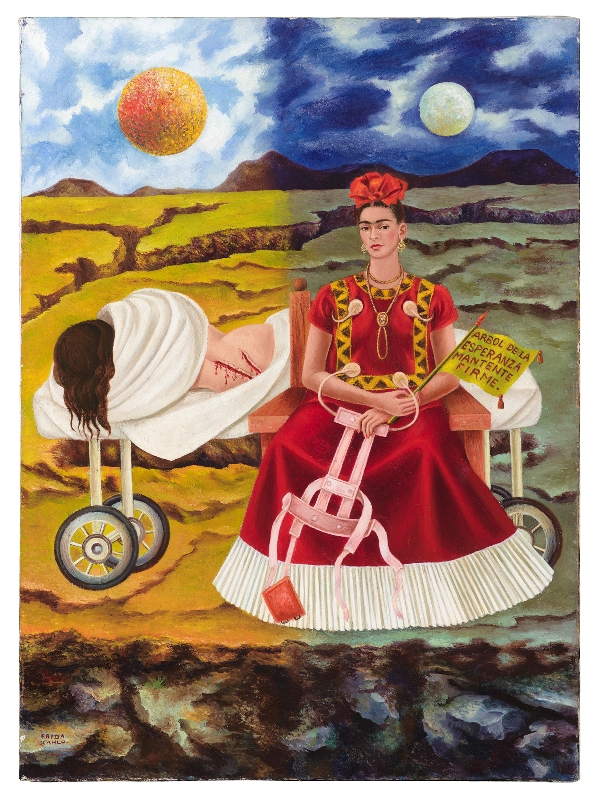MCA's Frida Kahlo Exhibit Is Beautiful, Provocative
By Marielle Shaw in Arts & Entertainment on Jun 19, 2014 9:10PM

Frida Kahlo, Arbol de la Esperanza (Tree of Hope), 1946. Private Collection, Chicago.© 2014 Banco de México Diego Rivera Frida Kahlo Museums Trust, Mexico, D.F. / Artists Rights Society (ARS), New York. Photo: Nathan Keay, © MCA Chicago.
If you haven’t wandered in the doors of the Museum of Contemporary Art Chicago lately, there’s a lot to catch up on. MCA Chicago has bid adieu to Illuminated Things and put away the shovel, but there’s plenty of new and exciting things to see.
"Unbound: Contemporary Art After Frida Kahlo" is a beautifully curated exhibit that speaks to four themes Kahlo herself emphasized in her storied works—gender performance, national identity, the political body, and the “absent” or traumatized body.
This isn’t the MCA’s first encounter with Frida. In 1978, MCA Chicago was the first museum to display Kahlo’s works in a solo exhibition. This goes beyond the body of Kahlo’s work though, past the fame of the artist and her iconic Mexican folk art style and more to what she was trying to say with her work. The exhibition space gives each of the four ideas equal and separate space, but the exhibit never seems disjointed, and flows seamlessly from one idea to another almost conversationally.
Bold, gender focused work takes center stage when you walk in, exploring the traditional hallmarks of femininity, exploring and exploding them, with works like Golon’s La muerte moriro cuando pasemos a la vida eternal—stark and colorful like Frida’s self portraits, representing that artist’s struggles with sexual identity and the AIDS epidemic of the 1970s. Another highlight is Tiny Split Character, Wongechi Mutu’s beautiful take on post-colonial representation of black women.
It was also in this room that the artwork discussed the “absent” or traumatized body—pieces that challenge the traditional portraiture and male gaze on the female form and instead show the body either in distress or at least partially absent from the picture itself. Kahlo’s famous La Venadita (The Little Deer) and Arbol de la Esperanza being of particular interest. Her bold strokes, stark contrasts and bright colors are even more impressive in person, and both pieces spoke on the artist’s own psychological wounds and fears. We also found ourselves haunted by Cindy Sherman’s Untitled #153, in which the artist is presented as a muddied corpse with lifeless eyes, meant to provoke thought about violence against women.
As you continue through the exhibit, politics and national identity become more prominent. A real standout was Shirin Neshat’s Turbulent, a video installation which employs two screens facing each other. One features a man reciting a Rumi poem to a room full of his peers, to thunderous applause. In another, a woman takes the stage of an empty room and prepares herself to sing. Both the visuals and audio come to a crescendo that very eloquently describes the problem of being female in that culture, where females are, in fact, forbidden even to sing in public.
There’s too many highlights to mention in this exhibit, so we encourage you to stroll through it yourself, with an open mind. We found ourselves appreciating its unblinking look at major societal issues and hope you will too. This is an exhibition that’s both beautiful and challenging, in all the right ways.
Unbound: Contemporary Art After Frida Kahlo will be on display at the MCA Chicago through Oct. 5. Hours and admission information can be found here.